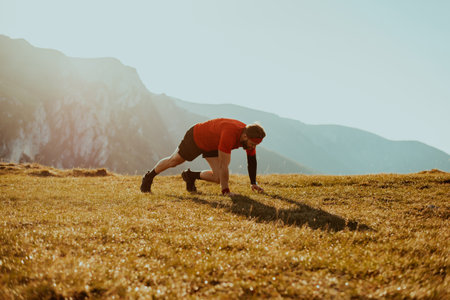Embracing Pre-Loved Adventures
Across the United States, a fresh wave of outdoor enthusiasts is redefining what it means to gear up for adventure. Instead of heading straight for shiny, brand-new equipment, more campers are turning their attention to second-hand and upcycled camping gear. This shift isn’t just about saving money—it’s about blending sustainability with a unique sense of adventure that’s as American as a summer night under the stars.
The Allure of Second-Hand Finds
For many, there’s something special about giving pre-loved gear a new lease on life. Each used tent or retro lantern comes with its own story, adding character to every trip. Plus, buying second-hand helps reduce waste and keeps usable items out of landfills—a win-win for both nature lovers and the planet.
Why Outdoor Lovers Are Making the Switch
| Reason | Details |
|---|---|
| Sustainability | Minimizes environmental impact by reducing demand for new products. |
| Affordability | Lowers the barrier for entry into camping by offering quality gear at lower prices. |
| Unique Style | Allows campers to stand out with one-of-a-kind or vintage pieces. |
| Community Connection | Encourages sharing and swapping within local outdoor circles. |
A Fresh Take on Adventure Culture
The rise in upcycled and thrifted camping gear reflects America’s growing passion for conscious living without sacrificing the thrill of discovery. Whether you’re picking up a weathered backpack from a local gear swap or scoring an upcycled camp stove online, these choices invite more personality—and responsibility—into every outdoor journey.
2. Why Americans Are Opting for Second-Hand
The Green Shift: Why Second-Hand Matters
Across the U.S., there’s a growing buzz around sustainability and mindful consumption. More Americans are searching for ways to reduce their environmental footprint—especially when it comes to outdoor adventures. The second-hand and upcycled camping gear movement is gaining momentum, not just as a trend but as a lifestyle choice that aligns with eco-friendly values.
What’s Driving the Trend?
Environmental Impact
Choosing pre-loved gear means fewer resources used in manufacturing new products, less waste ending up in landfills, and less pollution from production lines. It’s a small step that collectively makes a big difference for our planet.
Affordability
Let’s face it—camping equipment can get pricey. Buying second-hand or upcycled gear is often much easier on the wallet, making outdoor adventures more accessible for everyone, from college students to families on a budget.
The Allure of Retro Finds
Nostalgia plays a big part too. There’s something charming about scoring a classic lantern or vintage tent from decades past. Not only do these pieces have character, but they also tell stories of adventures gone by—a unique touch you just can’t get with brand new items.
How Second-Hand Gear Stacks Up
| Factor | Second-Hand/Upcycled Gear | Brand New Gear |
|---|---|---|
| Environmental Impact | Low (reduces waste and resource use) | High (requires new materials and energy) |
| Cost | Budget-friendly | Can be expensive |
| Uniqueness | Retro, one-of-a-kind finds | Standardized, mass-produced designs |
| Availability | Thrift stores, online marketplaces, gear swaps | Outdoor retailers, specialty shops |
| Sustainability Factor | Supports circular economy | Adds to consumption cycle |
The Local Flavor: American Thrift Culture & Community Swaps
Cultural trends like thrift shopping and community swap meets have deep roots in American neighborhoods. From urban gear exchanges to small-town garage sales, people are coming together to share resources and build connections—all while finding great deals on their next adventure essentials.

3. Curating Your Campsite with Upcycled Finds
Creating a memorable campsite is about more than just the gear you bring—it’s about expressing your personality and making your outdoor space feel like home. Upcycled and second-hand camping gear isn’t just eco-friendly; it’s also a creative way to add unique character to your campsite. Here are some tips and inspiration for styling your next adventure with upcycled finds.
Tips for Styling Your Campsite with Upcycled Gear
- Mix & Match: Don’t be afraid to blend different colors, textures, and eras. Vintage lanterns paired with modern, upcycled camp chairs can give your site a cozy, eclectic vibe.
- Personalize Functional Items: Add patches or fabric paint to second-hand backpacks or sleeping bags for a custom look. Repurpose old scarves as table runners or tent décor.
- DIY Storage Solutions: Turn thrifted baskets or crates into stylish storage for food, firewood, or essentials. Use old mason jars for utensils or as candle holders to create ambient lighting.
- Create Zones: Designate areas for cooking, relaxing, and sleeping using rugs or blankets made from repurposed fabrics. This makes your campsite feel organized and inviting.
- Showcase Stories: Choose pieces that have a story—like a hand-me-down cooler from family camping trips, or a salvaged enamel mug—and use them as conversation starters around the campfire.
Creative Upcycling Ideas for Common Camping Gear
| Item | Upcycling Inspiration |
|---|---|
| Old Flannel Shirts | Turn into picnic blankets, seat covers, or cozy pillowcases |
| Tin Coffee Cans | Use as plant holders, utensil caddies, or DIY lanterns with tea lights |
| Pallet Wood | Create portable tables, shelving units, or firewood carriers |
| Mismatched Plates & Mugs | Add charm to your camp dining setup—no two meals will look alike! |
| Bicycle Inner Tubes | Braid into sturdy rope for hanging lights or securing tarps |
Finding Your Unique Style at Thrift Shops & Online Marketplaces
Embrace the thrill of the hunt! Local thrift stores, garage sales, and platforms like Facebook Marketplace or Craigslist are treasure troves for unique camping essentials. Look out for quality gear that’s gently used—you might discover retro coolers, colorful enamelware, or even vintage tents that add nostalgic flair to your setup.
Your Campsite: A Canvas for Self-Expression
The best part of curating your campsite with upcycled gear is that there are no rules. Every piece tells a story and contributes to an eco-conscious lifestyle. So next time you’re gearing up for the great outdoors, let creativity lead the way and make sustainability part of your adventure style.
4. The Green Impact: Less Waste, More Wonder
Embracing second-hand and upcycled camping gear isn’t just a trend—it’s a movement that’s making the outdoors even more magical. By choosing pre-loved tents, backpacks, and outdoor essentials, campers across the U.S. are helping the planet in ways that go far beyond saving money.
Reducing Landfill: Giving Gear a Second Life
Every year, tons of perfectly usable camping equipment ends up in landfills. When you opt for second-hand or upcycled gear, you’re breaking this cycle and extending the life of each item. This not only keeps waste out of our environment but also reduces the demand for new products and their packaging.
Conserving Resources: More Nature, Less Footprint
Producing brand-new camping gear uses valuable resources like water, energy, metals, and plastics. Choosing pre-loved gear conserves these resources and shrinks your eco-footprint. Take a look at how your choice can make a difference:
| Eco Action | Environmental Benefit |
|---|---|
| Buying second-hand tents | Saves raw materials and reduces emissions from manufacturing |
| Upcycling old backpacks | Keeps textiles out of landfills and sparks creative reuse |
| Swapping or renting gear | Lowers demand for new products and packaging waste |
A Slower, Thoughtful Outdoor Lifestyle
This shift toward mindful consumption encourages us to slow down and savor our outdoor adventures. Each piece of pre-loved gear has its own story—maybe it’s a lantern that lit up someone’s first family camping trip or a hammock that’s seen countless sunsets. Bringing these items into your journey adds depth to your experience while supporting a more sustainable camping culture.
The Ripple Effect: Inspiring Others & Protecting Our Wild Spaces
When you choose green gear options, you inspire friends and fellow campers to rethink their habits too. Together, these small choices create big waves—protecting our forests, lakes, and mountains for generations to come. The beauty of second-hand and upcycled camping gear is not just in its function but in the wonder it brings to every adventure.
5. Where to Source Second-Hand and Upcycled Camping Gear
Finding quality second-hand and upcycled camping gear in the U.S. has never been easier. Whether you’re a seasoned adventurer or just getting into outdoor life, there are plenty of places to discover affordable, sustainable options without sacrificing style or function.
Local Thrift Stores
Your neighborhood thrift stores are treasure troves for gently used camping gear. From sleeping bags to backpacks, you might be surprised at what you can find on the shelves. Not only does shopping local support your community, but it also cuts down on shipping emissions.
Pro Tips for Thrift Shopping:
- Check stores near college campuses—students often donate barely-used gear before moving out.
- Inspect items for wear, missing parts, and cleanliness before buying.
- Ask staff about upcoming sales or donation days for the best deals.
Online Marketplaces
If you prefer browsing from home, online platforms offer a vast selection of used and upcycled camping gear across the country.
| Marketplace | Best For | How It Works |
|---|---|---|
| Facebook Marketplace | Local finds, quick pickups | Search by zip code, message sellers directly |
| eBay | Rare or vintage gear | Bidding or “Buy It Now” options with buyer protection |
| Craigslist | Bargain hunters | Direct negotiations and in-person exchanges |
| Geartrade | Outdoor-specific items | Sellers list pre-loved gear; buyers browse by category and brand |
Gear Swaps & Community Events
Cities across the U.S. host gear swap events where outdoor lovers gather to trade or sell used equipment. These events are perfect for meeting like-minded people and scoring deals on everything from tents to hiking boots.
Where to Find Gear Swaps:
- Check with local outdoor clubs, REI stores, and university recreation centers.
- Look for event postings on Meetup.com or community Facebook groups.
- Plan ahead—these swaps often happen seasonally, especially before summer and fall.
Special US-Based Upcycling Brands
If you want something truly unique, explore American brands that specialize in upcycled outdoor gear. These companies transform old materials into high-quality products with serious eco-chic vibes.
| Brand Name | Main Products | Sustainability Focus |
|---|---|---|
| Tentree Renewed Collection | Packs & accessories made from reclaimed fabrics | Reduces landfill waste by reusing materials |
| Plaid Again Outfitters (Etsy) | Plaid shirts turned into camp blankets & pouches | Handmade upcycling with small-batch charm |
| Cotopaxi (Del Día line) | Packs & duffels from leftover factory fabric scraps | No two pieces alike—colorful and resourceful design |
| The North Face Renewed | Refurbished jackets & sleeping bags | Keeps quality gear in use longer and out of landfills |
Your Next Adventure Starts Here!
No matter where you shop—from local thrift haunts to innovative upcycling brands—choosing second-hand camping gear is a smart way to protect our wild places while embracing personal style. Happy hunting!
6. Stories from the Trail
Every well-loved tent, vintage lantern, or patched-up backpack has a story to tell. Across America, campers are sharing how second-hand and upcycled gear have added extra meaning—and a touch of magic—to their outdoor adventures. These stories blend nostalgia with eco-joy, showing how sustainable choices can spark connections and unexpected moments.
Passed Down Through Generations
Some campers hit the trails with gear that’s been in the family for decades. Take Mia from Colorado: her dad’s old Coleman stove, rescued from the garage and fixed up with new parts, now fuels her own campfire breakfasts. Every time she uses it, she remembers childhood camping trips and feels closer to home—even when miles away.
Table: Heirloom Gear and Their Stories
| Gear Item | Origin Story | Current Use |
|---|---|---|
| Canvas Backpack | Bought at a flea market in 1987 by Grandpa Joe | Hiking in Yosemite with grandkids |
| Coleman Stove | Handed down from Dad, restored after years in storage | Family breakfasts at campgrounds |
| Pocket Knife | A thrift store find during a college road trip | Daily camping tool for preparing meals |
The Serendipity of Thrift Store Finds
Savvy campers like Tyler from Oregon love scouring local Goodwill stores for hidden gems. Last summer, he stumbled on a retro lantern that turned out to be from the 1960s—still working perfectly after a quick cleaning. Lighting it at dusk became a nightly ritual, gathering friends around its glow while swapping stories under the stars.
Nostalgia Meets Eco-Joy
The charm of second-hand gear isn’t just about saving money—it’s about making memories and treading lightly on the earth. For many American adventurers, each scratch or patch tells a tale of resilience and discovery. Whether it’s a patched-up tent that survived a storm or a repurposed cooler keeping drinks cold at a lakeside picnic, these items bring more than function—they carry history, personality, and a sense of belonging to something bigger.


